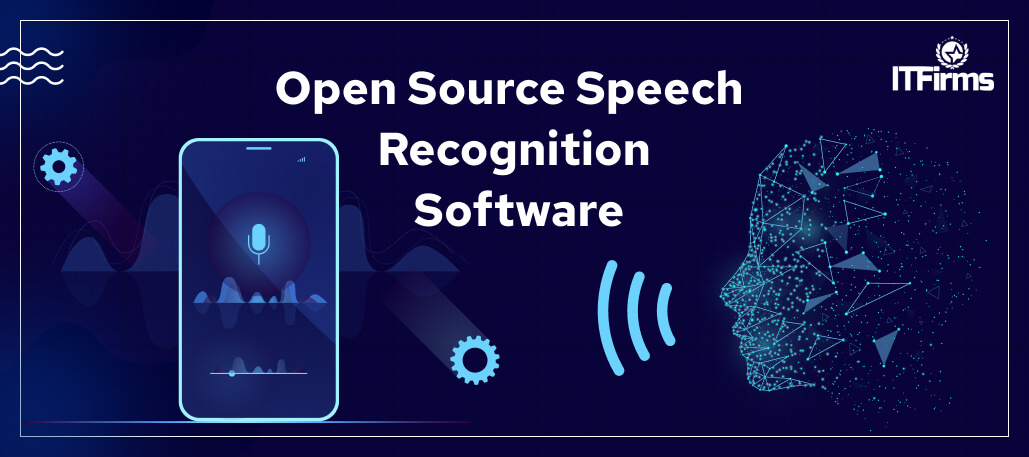
Top Free and Open-Source Speech Recognition Software
This excerpt illustrates the need, features and more FAQ on the use and adaptability of speech recognition software solutions!
Table of Contents
- Why do we need voice recognition software?
- How reliable is voice recognition?
- How do you recognize a speech?
- Can we make speech recognition software do more than just typing?
- Are voice-text conversion software device-dependent?
- Which prevalent speech recognition programs are the best?
- List of best open source speech recognition software.
- Simon
- Kaldi
- CMUSphinx
- Mozilla
- Julius
- Dictation Bridge
- Mycroft
- Are there any disadvantages to open source voice recognition software?
- Conclusive
Speech recognition programs have branched out from computer science and computational linguistics developing methodologies to recognize verbal speech and translate it into text. As you speak the computer will recognize and type what you say. Therefore, you may use your voice to write your emails, documents, social media posts, and blog posts, giving you a chance to align your thoughts better. The main considerations of speech detecting software are Word error rate, Accuracy, Speed, ROC curves.
Why do we need voice recognition software?
This methodology can make your computer type what you want it and can correct grammatical mistakes, filter what you say and finally translate it into text.
How reliable is voice recognition?
Voice to text recognition software by Google came into being in 2017 with a 95% accuracy rate. That seemed impressive but it still assumes some significant gender and racial bias. It stills lags in recognizing a male or a female voice.
How do you recognize a speech?
The speech recognition software makes some effort to detect a voice and translate it into the text. It selects a waveform, splits it at utterances followed by silences, and tries recognizing what’s being said in each utterance. For doing that, it considers all possible combinations of words and tries matching them with the audio.
Can we make speech recognition software do more than just typing?
Voice detection and conversion software come pre-loaded with commands to help the user to open and close programs, make changes to settings, so that makes it eligible to do various things with your computer without even touching it.
Are speech to text conversion software device-dependent?
Speech recognition software does consume many computing resources. So you must use a powerful device with speed – probably Windows 10 and above with at least 2.6 GHz processing speed and at least 6 GB RAM.
Which prevalent speech recognition programs are the best?
This list is illustrative; we will be listing more subsequently:
- Siri
- Dragon Professional
- Dragon Anywhere
- Google Now
- Google Cloud Speech API
- Google Docs Voice Typing
- Amazon Lex
ITFirms suggests a list of best open source speech recognition software, as follows:
Simon
It is an open-source and free speech recognition software program to convert any supporting language or dialect to the text. It makes use of KDE libraries and can get coupled with CMU Sphinx and/or Julius with the HTK to run on Windows and Linux.
Kaldi
Kaldi is a speech recognition system to support linear transforms, MMI, boosted MMI and MCE discriminative training, deep neural networks, and feature-space discriminative training.
CMUSphinx
It makes use of mel-cepstrum MFCC features combined with noise tracking and spectral subtraction for noise reduction. Various types of MFCC differ by several parameters, but not really for accuracy.
Mozilla
These focus on DeepSearch, an automatic speech recognition engine aiming to make the speech recognition technology and trained models openly available to the developers. It utilizes a simple application programming interface for a deep-learning-based ASR engine.
Julius
It makes use of a huge vocabulary continuous speech recognition decoder software (LVCSR), based on word N-gram and context-dependent HMM to perform real-time decoding on various devices from microcomputers to cloud servers. It focuses on on-the-fly recognition for network input and microphone, CMM based input rejection, successive decoding, delimiting input by short pauses, N-best output, server mode and control API, confidence scoring, word graph output, forced alignment on word, control API and server mode.
Dictation Bridge
It is an add-on screen reader that serves as a gateway between the NVDA and JAWS screen readers and in between Windows Speech Recognition and Dragon Naturally Speaking. It has the potential to change how you work with computers using voice recognition.
Mycroft
It is a customizable solution, an open-source voice stack that is easily deployable. It can be easily implemented with any science project or global enterprise environment. It can convert speech into text, text to speech, intent parsing, modular design and interoperability, can do wake word spotting, keyword spotting through its precise wake word engine.
Are there any disadvantages to open source voice recognition software?
As with every program or an app, they are based on human computation, some algorithms, business logic, and Artificial Intelligence if that is applicable. The speech-to-text converter does come with some challenges:
- It might be a little less accurate
- This software can often misinterpret what is being said
- The development of this software might be time and cost consuming
- The accuracy and performance might not be perfect
- It becomes difficult sometimes to remove the background noise interference
- And many more physical side effects
Conclusive:
It is now easy to construct applications that require speech to text to speech capability. Such software finds immense usability in sending long emails, reading and editing long documents and minimize the typing part. You get an option to create such software for mobiles, web, or desktop. Looking to create speech recognition software solutions, discuss them with our team.
